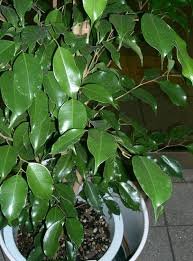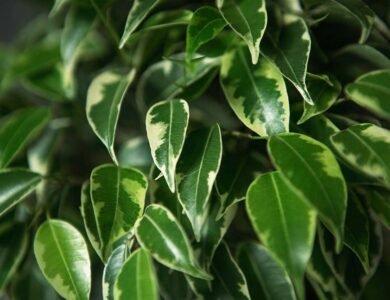
Ficus benjamina, commonly known as the weeping fig, is a versatile and elegant houseplant that adds charm to any space. With its slender trunk and arching branches covered in glossy, teardrop-shaped leaves, this plant is as much a decorative feature as it is a natural air purifier. Native to tropical Asia and Australia, Ficus benjamina thrives indoors and can adapt well to various environments with proper care.
Why Choose Ficus Benjamina?
The weeping fig is a favorite among plant enthusiasts for its graceful appearance and relatively low maintenance requirements. It is perfect for homes, offices, and even public spaces, providing a touch of nature and tranquility. Beyond aesthetics, this plant is known for its air-purifying properties, helping to improve indoor air quality.
How to Care for Ficus Benjamina
Proper care is key to keeping your Ficus benjamina healthy and thriving. Here’s everything you need to know:
1. Light: Bright and Indirect
Ficus benjamina thrives in bright, indirect light, making it ideal for well-lit rooms. Place it near a window with filtered sunlight, but avoid prolonged exposure to direct sunlight, which can scorch its leaves. If light levels are too low, the plant may start shedding leaves.
2. Watering: Consistency is Key
This plant prefers moderately moist soil. Water your Ficus benjamina when the top inch of soil feels dry to the touch. Overwatering can lead to root rot, while underwatering may cause leaf drop. Always ensure your pot has drainage holes to prevent waterlogging.
3. Humidity and Temperature: Tropical Comfort
Ficus benjamina thrives in warm, humid conditions. Maintain a temperature range of 65-75°F (18-24°C) and avoid placing it near drafts or air conditioning vents. If your home is dry, increase humidity with a humidifier or by misting the leaves.
4. Pruning and Maintenance: Keep It Neat
Regular pruning helps maintain the plant’s shape and encourages healthy growth. Remove any dead or yellowing leaves and trim overgrown branches. Cleaning the leaves with a damp cloth will keep them dust-free and vibrant.
5. Fertilization: Feed Regularly
During the growing season (spring and summer), feed your Ficus benjamina with a balanced liquid fertilizer every 4-6 weeks. Reduce feeding during the fall and winter when growth slows.
Common Problems and Solutions
- Leaf Drop: Often caused by sudden changes in light, temperature, or watering habits. Keep the plant’s environment stable.
- Yellow Leaves: May indicate overwatering or poor drainage. Adjust your watering routine.
- Pests: Watch out for spider mites, scale, and mealybugs. Treat infestations with insecticidal soap or neem oil.
Ficus Benjamina as a Statement Plant
Ficus benjamina is not just a plant but a living piece of decor that enhances the ambiance of any room. Its graceful weeping branches make it an excellent centerpiece in larger spaces, while smaller varieties are perfect for tabletops or desks. With the right care, your weeping fig can grow into a stunning, long-lasting companion.


One Comment